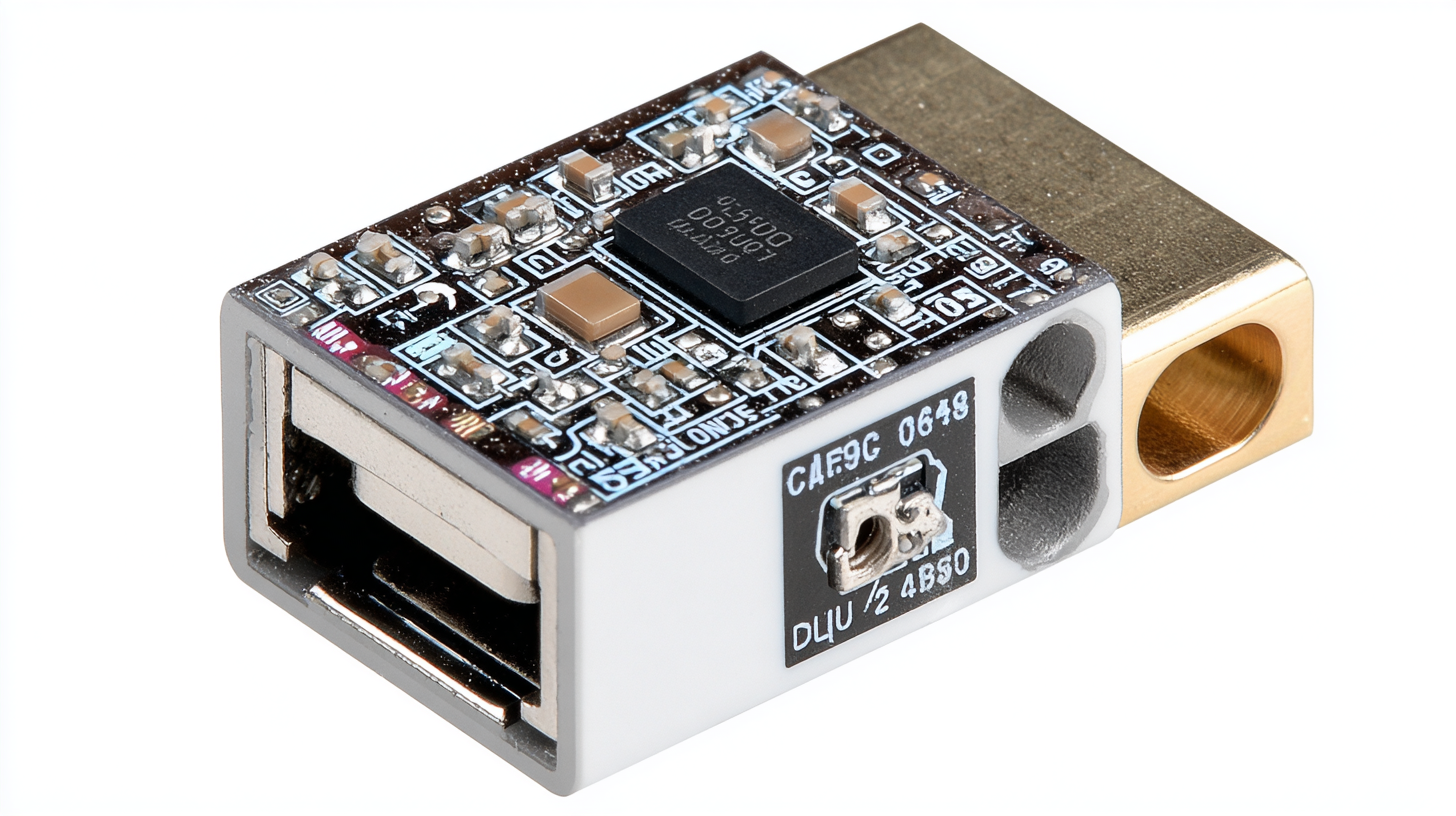
Leading Global Manufacturing Excellence in Best Usb Charger Socket Module Production
In today's rapidly evolving technological landscape, the demand for reliable and efficient power solutions has never been greater, particularly in the realm of consumer electronics. One essential component driving this demand is the Usb Charger Socket Module, which serves as a crucial link in ensuring that devices are charged quickly and safely. As the global manufacturing industry strives for excellence, it becomes imperative to adhere to stringent import and export certifications that govern the quality and functionality of these modules.
 This blog aims to explore the significance of industry certifications in the production of Usb Charger Socket Modules, highlighting the vital role they play in maintaining product excellence and consumer trust. By delving into the rigorous standards and regulations that manufacturers must navigate, we can better appreciate how these factors contribute to the overall success and reliability of Usb Charger Socket Modules in the international market.
This blog aims to explore the significance of industry certifications in the production of Usb Charger Socket Modules, highlighting the vital role they play in maintaining product excellence and consumer trust. By delving into the rigorous standards and regulations that manufacturers must navigate, we can better appreciate how these factors contribute to the overall success and reliability of Usb Charger Socket Modules in the international market.
Types of USB Charger Socket Modules and Their Unique Features
In today's rapidly advancing technology landscape, USB charger socket modules have become essential components in both personal and professional electronics. These modules vary significantly in their design, power output, and features, catering to a wide range of devices from smartphones to laptops.
One notable type includes the high-power USB-C sockets capable of delivering up to 100W, essential for charging high-performance laptops and other demanding devices. These multi-port Type-C PD (Power Delivery) modules not only provide robust power solutions but also enhance efficiency by reducing the need for multiple chargers.
Additionally, with the transition of iPhones to USB-C connectors, compatibility with an array of devices has grown exponentially. This change highlights the importance of versatile USB charger socket designs that accommodate various data transfer and charging requirements.
For instance, unique modules that integrate fast charging capabilities, such as those with Quick Charge standards, further align with the growing consumer need for speed and efficiency. With the evolution of USB solutions, choosing the right socket module can significantly improve user experience by ensuring devices are charged quickly and effectively.
Applications of USB Charger Socket Modules in Different Industries
The USB charger socket module has become an indispensable component across various industries, owing to its versatility and convenience. In the consumer electronics sector, these modules allow users to charge devices quickly and efficiently, enhancing the overall experience of smartphones, tablets, and laptops. Moreover, in automotive applications, USB charger sockets are increasingly integrated into vehicles, providing passengers with the ability to stay connected on the go. This trend reflects the growing demand for accessibility and ease-of-use in modern technology.
Tips for selecting the right USB charger socket module include considering the power output necessary for your devices. It’s essential to choose a module that can handle the correct voltage and current to ensure safe and efficient charging. Additionally, look for models with multiple ports, which can be particularly beneficial in office settings or for family use, allowing several devices to charge simultaneously without compromising performance.
In the hospitality industry, USB charger sockets significantly enhance guest experience in hotels and restaurants by offering convenient charging options. These modules are often installed in bedside tables and common areas, allowing guests to charge their devices effortlessly. When implementing USB charger solutions, ensure that the design aligns with the overall aesthetic of the space to create a seamless blend of functionality and style.

Comparative Advantages of Various USB Charger Socket Types
In the ever-evolving landscape of consumer electronics, USB charger socket modules have become essential components due to their functionality and convenience. A comparative analysis reveals the advantages of various USB charger socket types, influencing not just user experience, but also manufacturing standards. According to a report by MarketsandMarkets, the global market for USB charger sockets is projected to reach $15.2 billion by 2025, demonstrating a compound annual growth rate (CAGR) of 10.5%. This growth underlines the significance of adopting the most efficient socket types in production lines.
Among the various USB charger socket types, the USB-C socket is increasingly favored for its versatility and higher power delivery capabilities. With Power Delivery (PD) technology, USB-C can support faster charging and data transfer, catering to the needs of modern devices that demand higher energy efficiency. A study by Allied Market Research highlights that the USB-C segment alone is expected to dominate the market, capturing over 60% of the market share by 2025. This data illustrates a clear trend towards standardized and efficient charging solutions in both consumer electronics and manufacturing.
On the other hand, USB-A sockets still hold a significant market portion due to their widely adopted design and compatibility with various devices. While traditional USB-A chargers are limited in power output, they remain cost-effective for basic needs. The ability of manufacturers to balance modern designs with legacy support could set them apart in the competitive manufacturing sector, driving excellence in the production of USB charger socket modules.
Leading Global Manufacturing Excellence in Best USB Charger Socket Module Production - Comparative Advantages of Various USB Charger Socket Types
| Socket Type | Power Output (W) | Efficiency (%) | Ports Available | Dimensions (mm) | Cost ($) |
|---|---|---|---|---|---|
| Type-A USB Socket | 10 | 85 | 2 | 50 x 30 | 8.00 |
| Type-C USB Socket | 18 | 90 | 3 | 60 x 35 | 12.50 |
| Wireless Charger Socket | 15 | 80 | 1 | 70 x 70 | 22.00 |
| Fast Charge USB Socket | 30 | 95 | 2 | 64 x 38 | 15.00 |
| Multi-Port USB Hub | 60 | 88 | 6 | 110 x 45 | 25.00 |
Future Trends in USB Charger Socket Module Technology
The future of USB charger socket module technology is being profoundly influenced by the widespread adoption of USB-C interfaces. This revolutionary connector is not only versatile but also accommodating faster charging capabilities, which aligns perfectly with the modern demands for efficiency and convenience. As technology continues to advance, it is essential for manufacturers to stay ahead of trends to maintain competitive advantage and meet consumer expectations.
Tip: Invest in R&D to innovate and improve upon existing USB-C technologies. Staying informed about emerging trends and user needs can drive product development strategies, ensuring that offerings remain relevant in a dynamic marketplace.
Moreover, the global market for independent chargers is thriving, reaching significant milestones. This presents a substantial opportunity for manufacturers, especially in the rapidly growing segment of fast-charging solutions. With projected market expansions, focusing on quality and cutting-edge features will be key to securing a larger market share.
Tip: Collaborate with technology partners to enhance product offerings. Leveraging expertise in various technological disciplines can facilitate the development of advanced USB-C modules that cater to diverse consumer requirements, thereby driving long-term growth and success.
Future Trends in USB Charger Socket Module Technology
Maximizing Efficiency with the Right USB Charger Socket Module Selection
 Selecting the right USB charger socket module is crucial for enhancing manufacturing efficiency in today's fast-paced market. When manufacturers prioritize quality and compatibility in their USB charging solutions, they set themselves apart from competitors. Modules that incorporate advanced features such as fast charging capabilities and multi-device support not only meet consumer demands but also streamline the production process. This ensures that manufacturers can reliably deliver products that are both high-performing and cost-effective.
Selecting the right USB charger socket module is crucial for enhancing manufacturing efficiency in today's fast-paced market. When manufacturers prioritize quality and compatibility in their USB charging solutions, they set themselves apart from competitors. Modules that incorporate advanced features such as fast charging capabilities and multi-device support not only meet consumer demands but also streamline the production process. This ensures that manufacturers can reliably deliver products that are both high-performing and cost-effective.
Additionally, understanding the specific needs of the target market plays a vital role in module selection. Different applications require varying power outputs, sizes, and connectivity options. By aligning the USB charger socket module with the product specifications and user requirements, manufacturers can significantly reduce waste and improve production timelines. Investing in the right technology not only enhances productivity but also fosters innovation within manufacturing processes, ensuring that businesses remain at the forefront of the industry.
